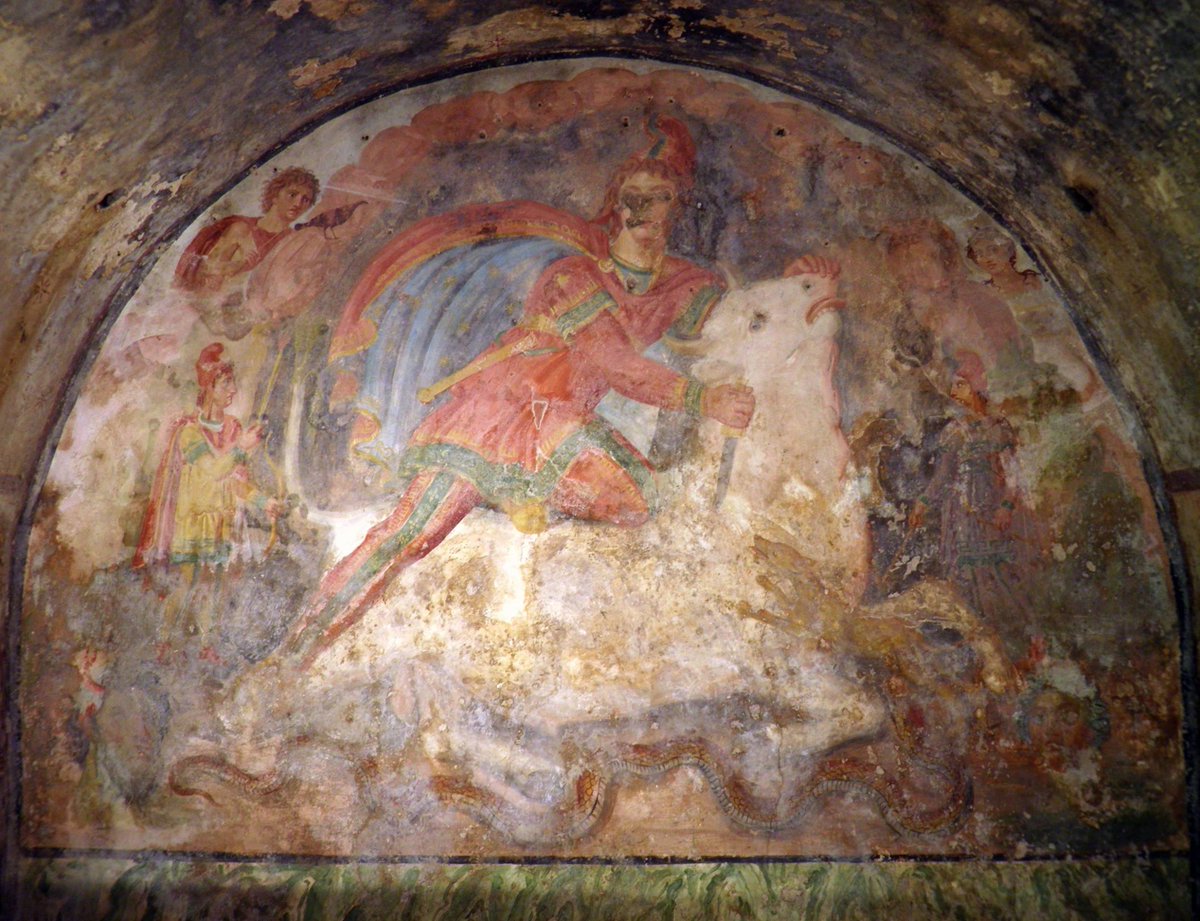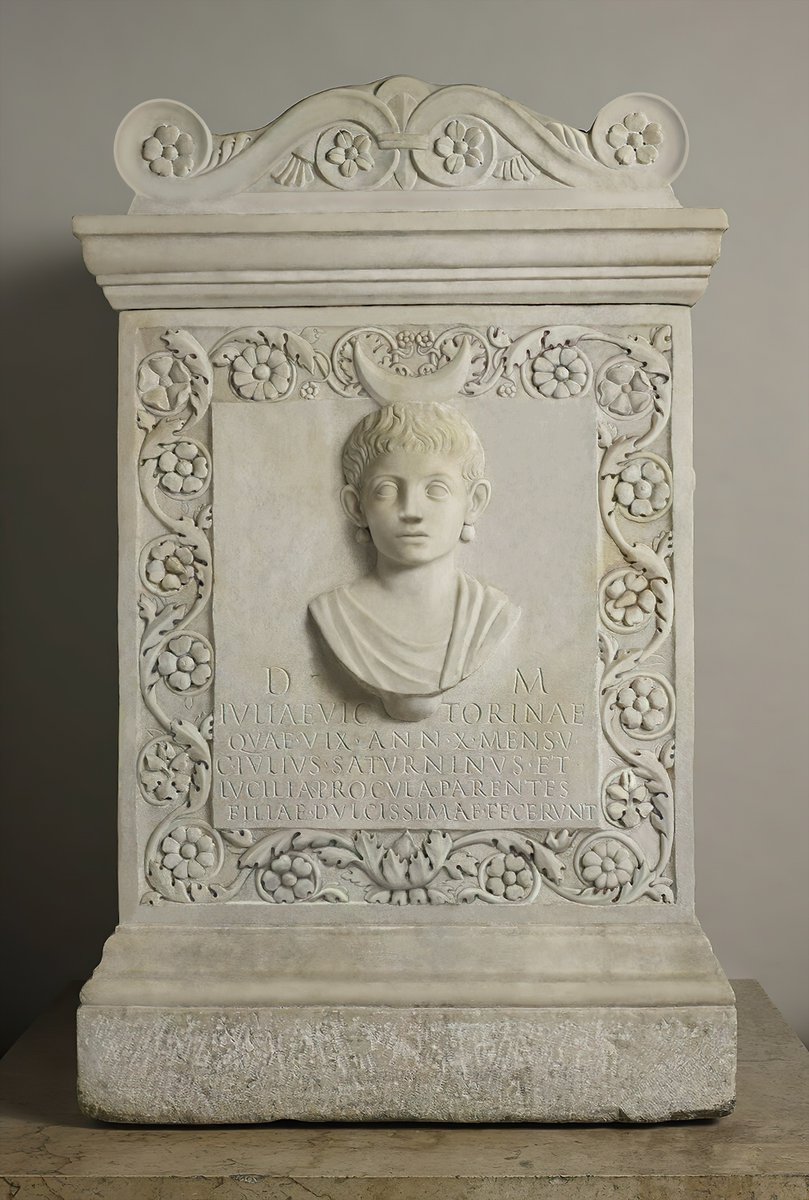
My new digital restoration is this remarkable 2nd c. AD #sculpture of #Eros (Cupid) on a dolphin, approximating how it might have once appeared in the garden of an ancient Roman villa. But who’s captured who here? #polychromy #art #archaeology #romanhistory @MANNapoli 1/ 
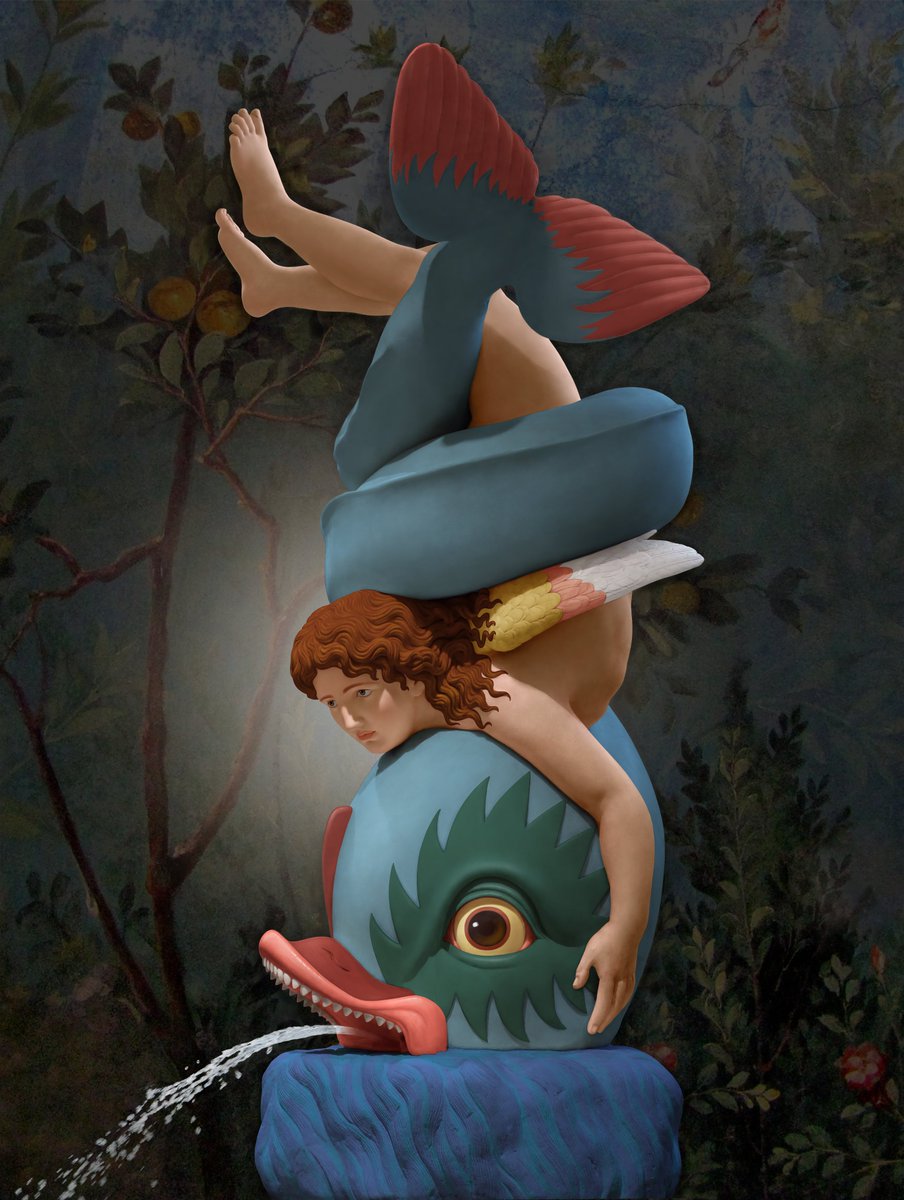
The statue is on display at the Nat'l Archaeological Museum in Naples, but I can’t find information on its history or find spot. Once apparently part of the #Farnese Collection, a copy of a bronze #Greek original. 📸@MumblerJamie and Darren Puttoc. 2/ 



A few close-ups reveal that the head is likely modern - probably 18th c. (?), and quite good - but everything else, aside from a couple of fingers, appear to be ancient. The modern curls are very Botticelli-esque! 3/ 




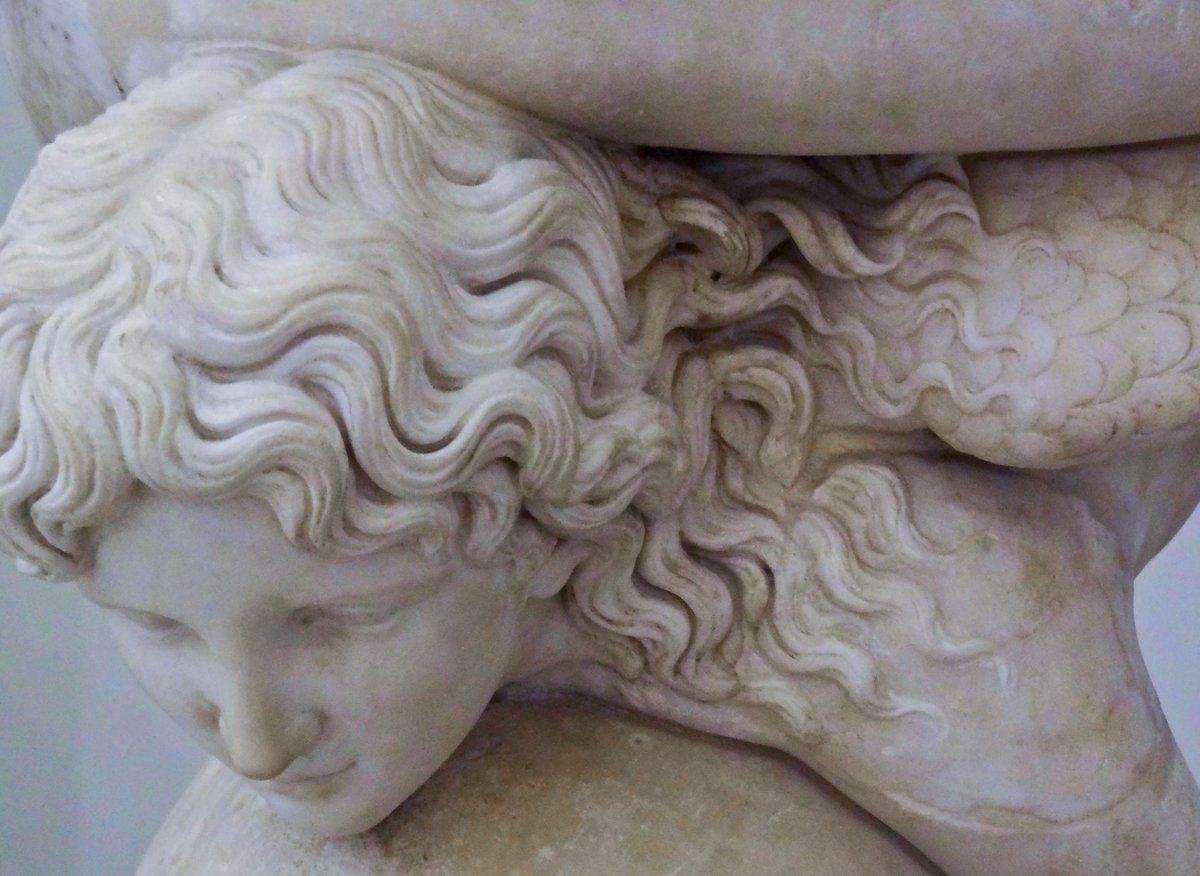
One problem: how would the Romans have painted a dolphin? Examples from all over the empire show little agreement in color (other than red flukes/fins), so I used a range of mosaics and frescoes to inform my choices. 4/ 






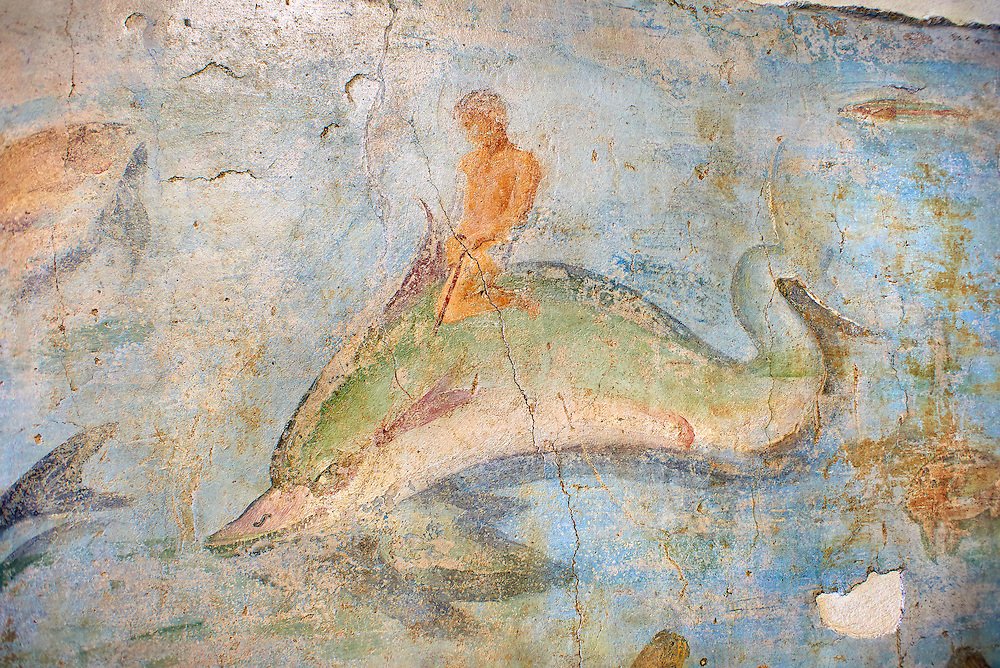
I’m particularly pleased with the eye (major reconstruction job), which is based on Roman dolphin representations, but also Roman fish mosaics (mosaic from the House of the Faun, Pompeii) and assorted sea beasts and monsters. He would scare the heck out of me in the ocean! 5/ 





Why is Eros riding a dolphin? The symbolism goes back to ancient Greece, where young men, Naiads and even hoplites were depicted riding dolphins. Coins of ancient Tarentum showed its mythical founder - Taras - riding the dolphin that saved him from drowning. 6/ 





Eros riding a dolphin makes a sort of sense. His mother Aphrodite was born from the sea. The symbolism - particularly in the Roman versions - has also been read as love (Eros) being a wild ride, etc. Lekythos c. 480 BC, Princeton Art Mus.; #Pompeii fresco pic by Klaus Hees. 7/ 





But the most potently symbolic representation of Eros on a dolphin is part of the Prima Porta Augustus. The head of the child Eros is a Julio-Claudian portrait (Gaius?), and his presence stresses the mythical descent of the Julii from Aphrodite through Aeneas. 8/ 



But many representations of Eros on a dolphin were merely decorative in the Roman empire. The 2nd-3d c. sculpture below looks like Eros is on a dolphin hobby horse! (#HermitageMuseum) And a decorative bronze mirror case alludes to erotic love. (#MFABoston) 9/ 


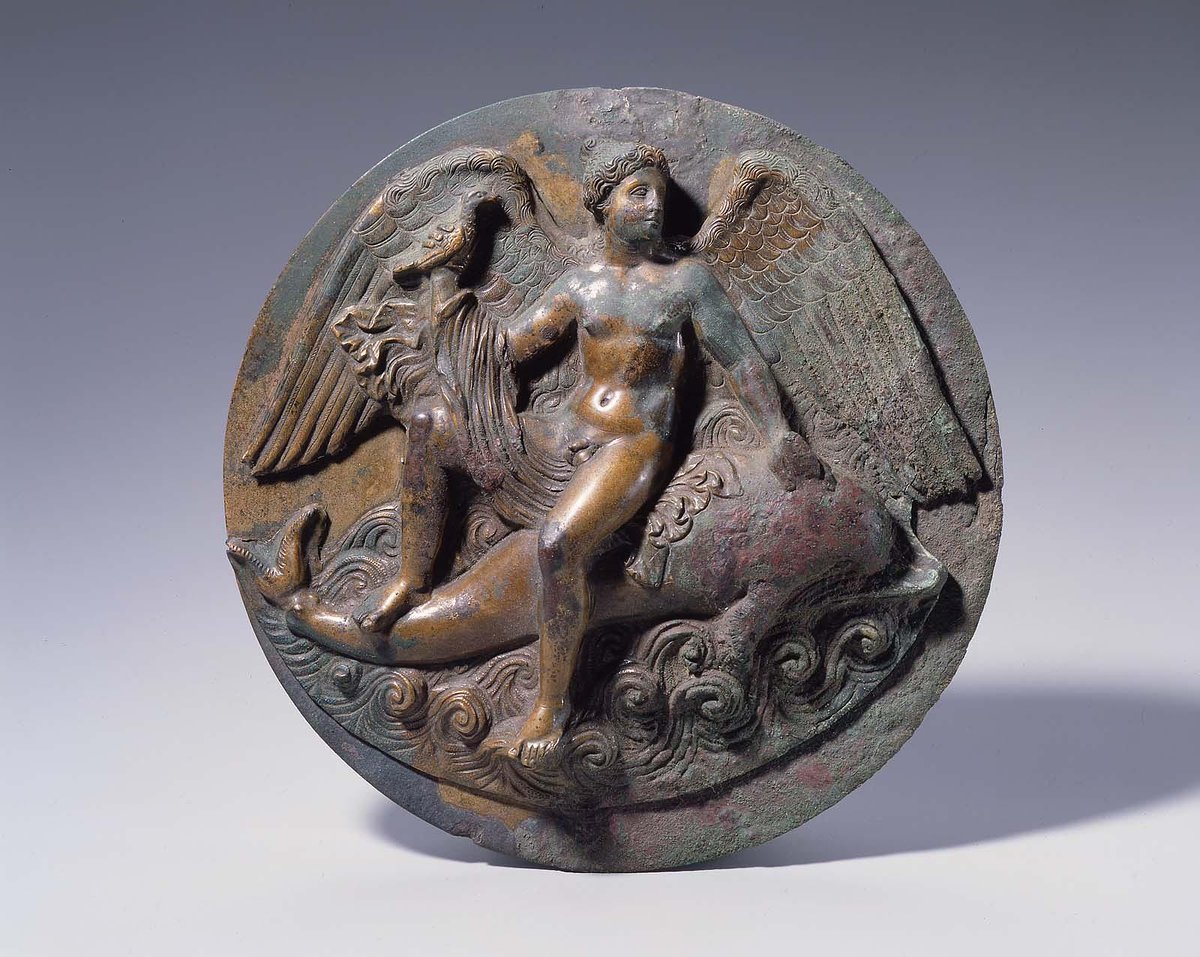
Around 1900, a couple of bronze reproductions of our fountain statue were cast by the Chiurazzi Foundry in Naples. One is in the garden of the Achilleion palace in Corfu (📸 Tasoskessaris). The other is in the Astor Library at the Ringling Museum of Art in Sarasota, Florida. 10/ 



Our fountain is certainly striking, because Eros both captures the wild dolphin and is captured in turn by its snaky body. Perhaps an allegory about the uncontrollable nature of love? So here I'll leave it, with an image that shows the three stages of digital restoration. 11/ 

For the few who actually saw this thread, a little extra. A #3D printable version of this sculpture! If only I had a 3D printer ... myminifactory.com/object/3d-prin… 

• • •
Missing some Tweet in this thread? You can try to
force a refresh










